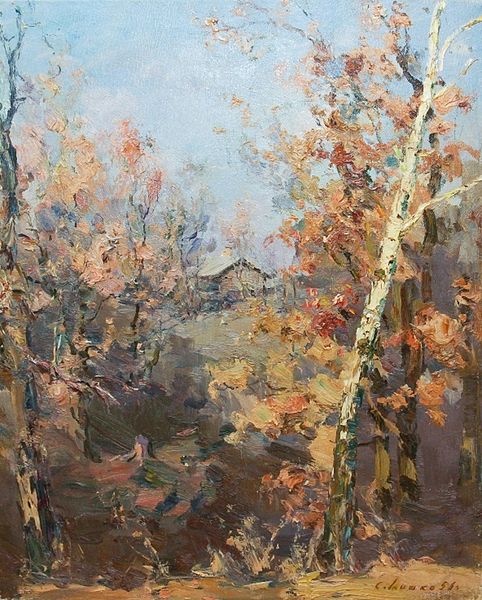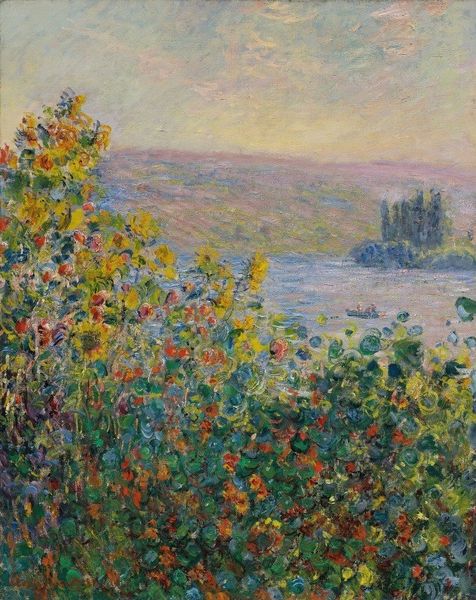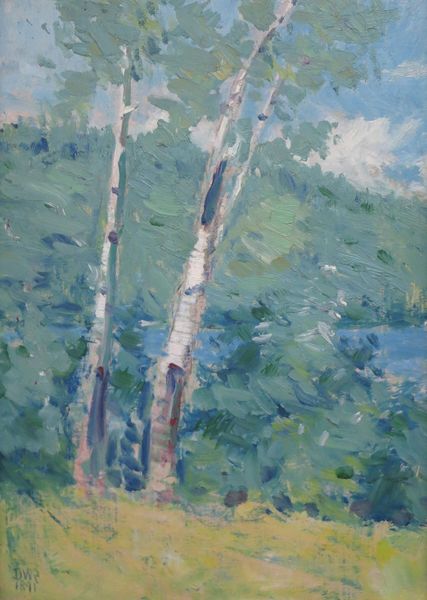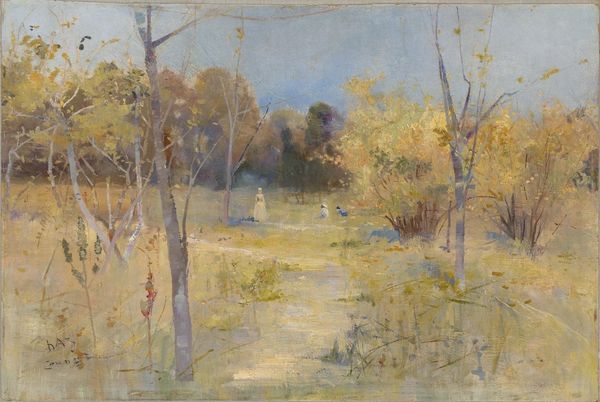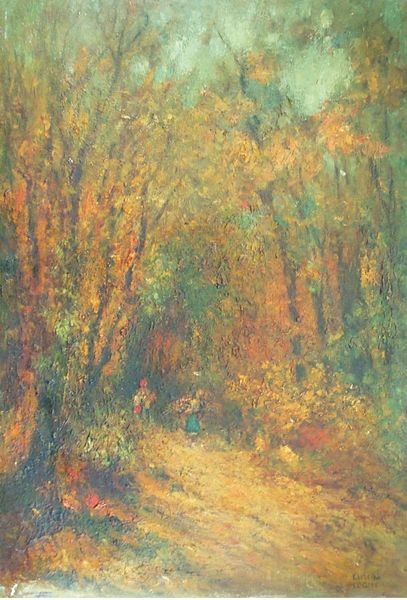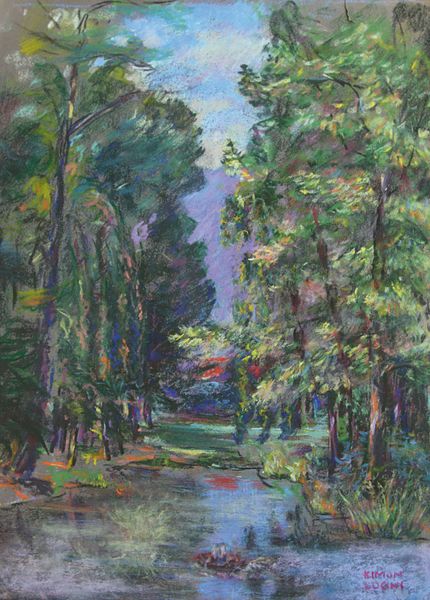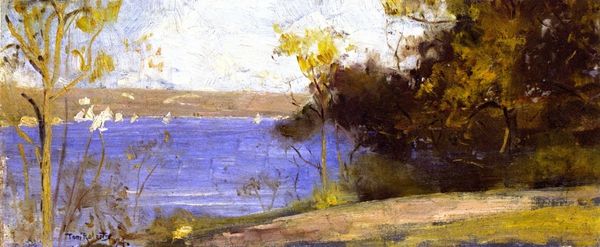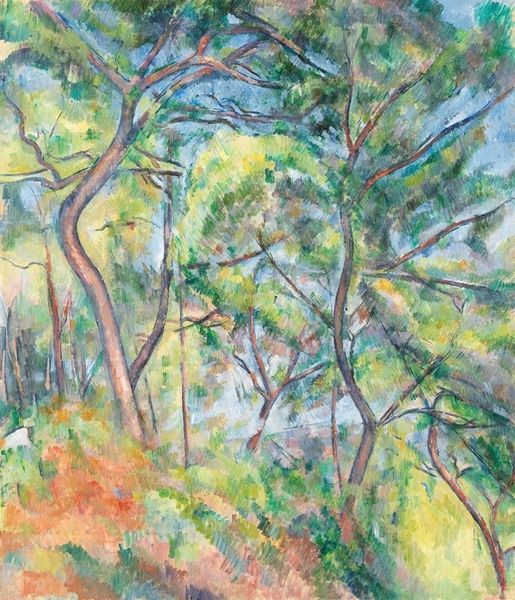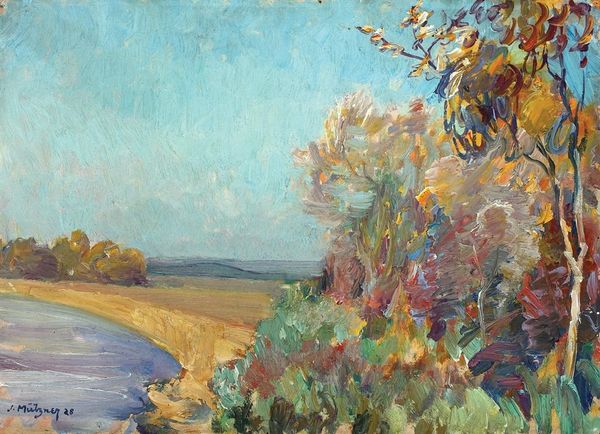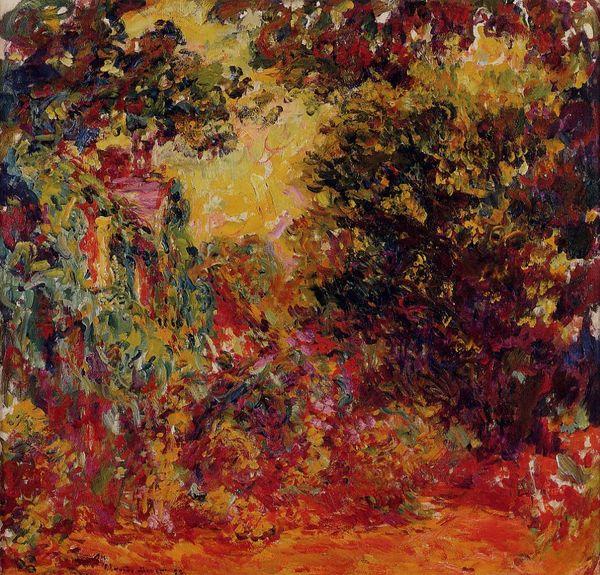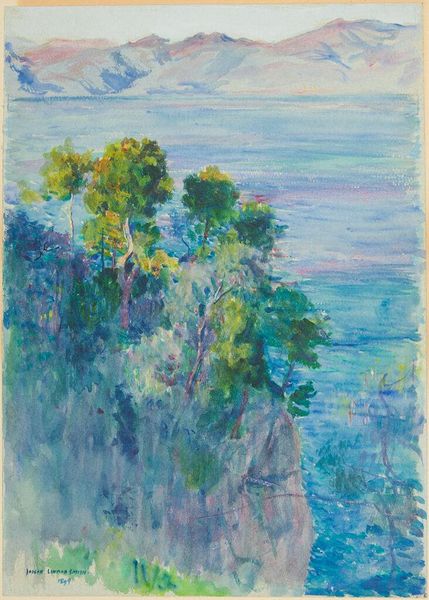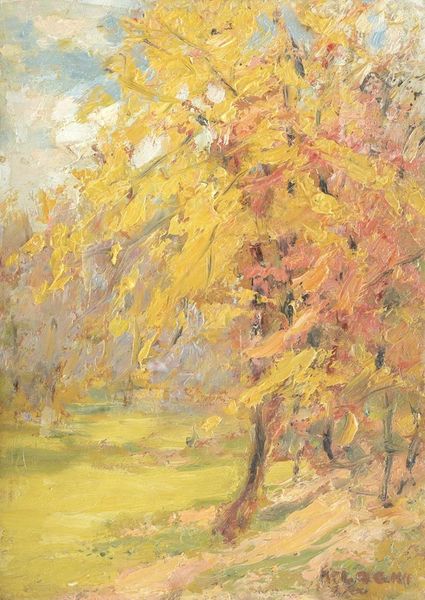
painting, plein-air, oil-paint, impasto
#
painting
#
impressionism
#
plein-air
#
oil-paint
#
landscape
#
impressionist landscape
#
impasto
#
seascape
#
post-impressionism
Copyright: Kimon Loghi,Fair Use
Curator: So, we're looking at a painting simply titled "On the Lakeshore" by Kimon Loghi. I am just taken by this work, with its evident use of oil paints, and the style seems to nod towards post-impressionism. What's your initial take? Editor: Immediately, it strikes me as ethereal. The hazy blues and soft yellows evoke a sense of calm, but there's also an undercurrent of melancholy, perhaps tied to the transition of seasons suggested by the foliage. It feels like a memory. Curator: I can see that. The lack of a definite date for it lets us place it conceptually almost anywhere in the late 19th to early 20th centuries, prime time for plein-air painters inspired by places like the Mediterranean shores. This also places it nicely within an exploration of impressionistic traditions. Editor: Absolutely, the visible brushstrokes—that beautiful impasto—become symbols themselves, don't they? Each dab of paint is a mark of time, a moment captured. That heavily textured surface mirrors the roughness of the landscape. It's an unrefined portrayal, emphasizing nature's inherent beauty in a way that rejects idealized landscapes. Curator: Precisely! The way Loghi manipulates light, despite the overall softness, highlights the tension between transient beauty and nature's stoic presence. Notice how the path subtly draws you in, like a beckoning, almost guiding light to the serene yet somewhat ominous horizon line. Editor: That path definitely functions as more than just a road. Think about its cultural and psychological weight. Paths are passages, symbolic of journeys and choices. Leading towards water can be a potent image, suggesting cleansing, renewal, but also the unknown, a plunge into the subconscious. This piece really stirs some feelings inside. Curator: Agreed. Its power lies not in its photographic realism but in its suggestive ambiguity. It invites us to project our own experiences onto the canvas, becoming active participants in its story. Editor: Well said! "On the Lakeshore" leaves us contemplating the transient and timeless aspects of existence itself, all captured through this lens of landscape. Curator: And maybe next time we take a walk, we will look just that bit more keenly at what is there, beyond the immediate experience.
Comments
No comments
Be the first to comment and join the conversation on the ultimate creative platform.
